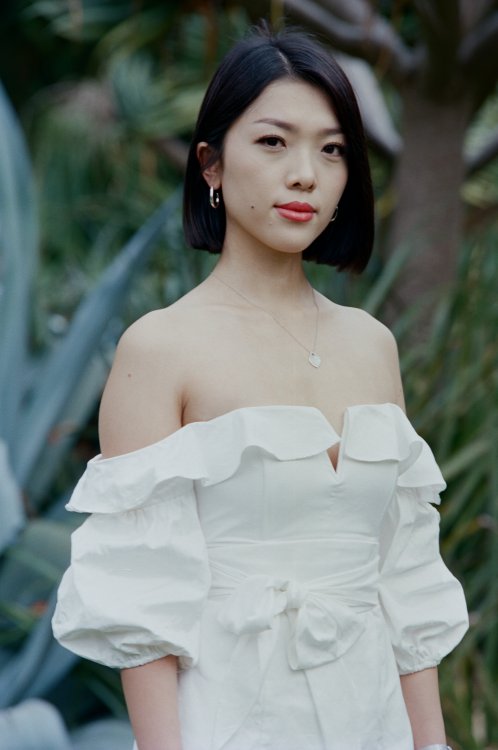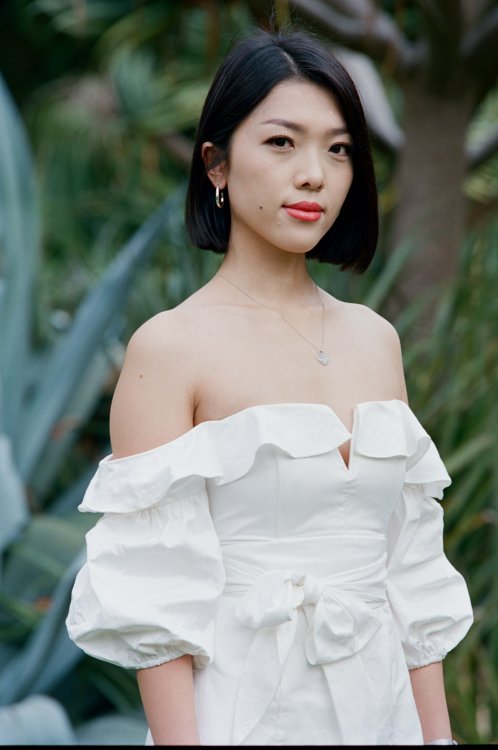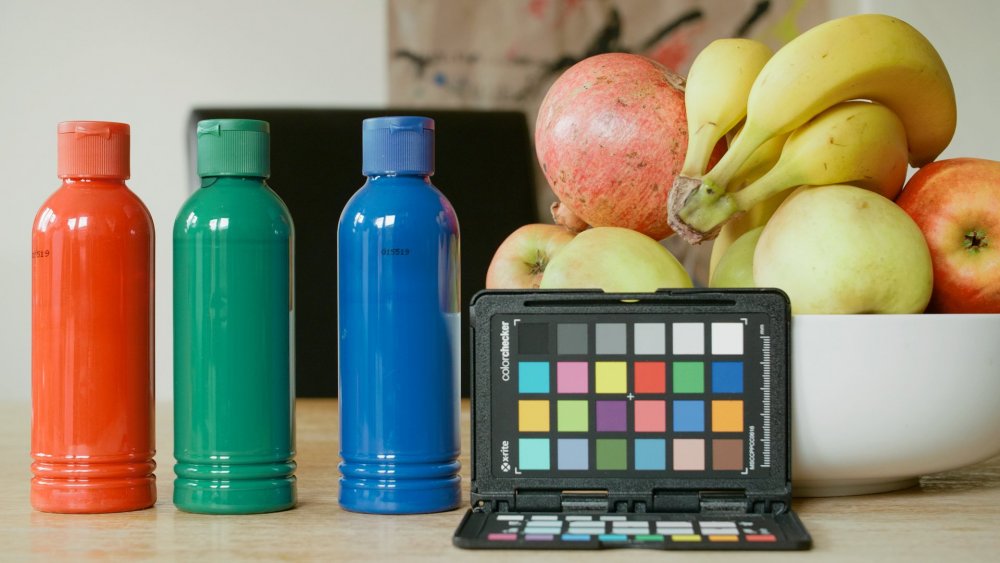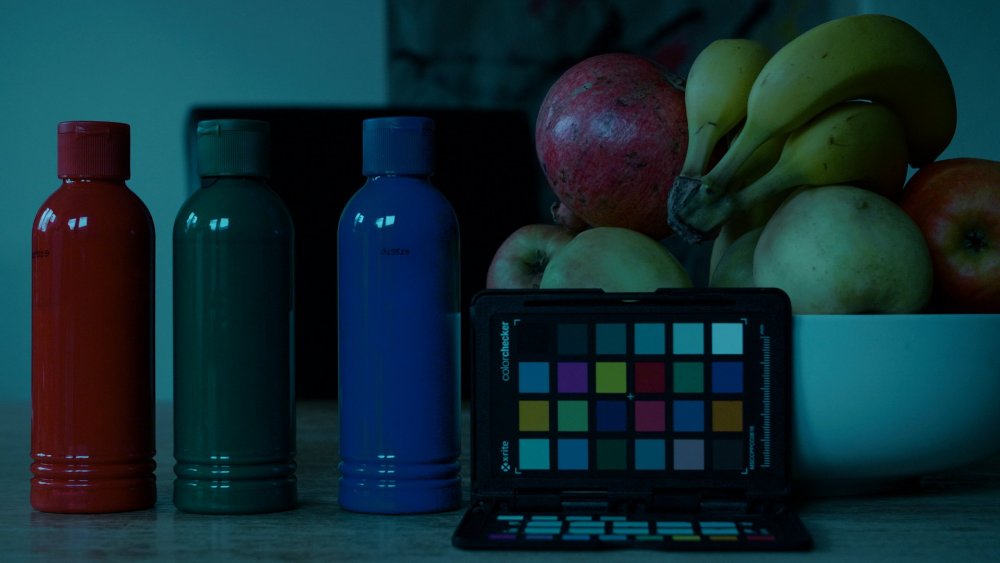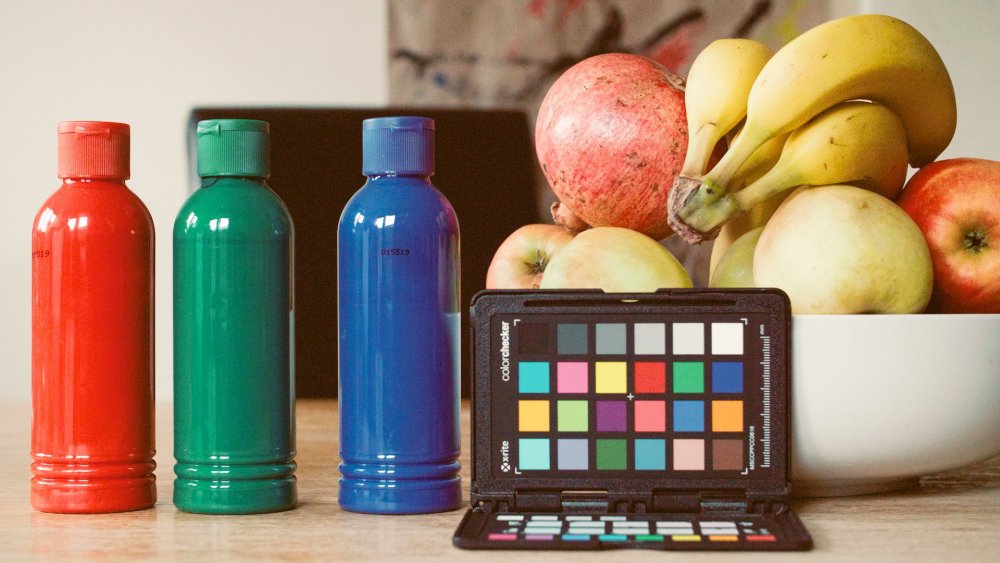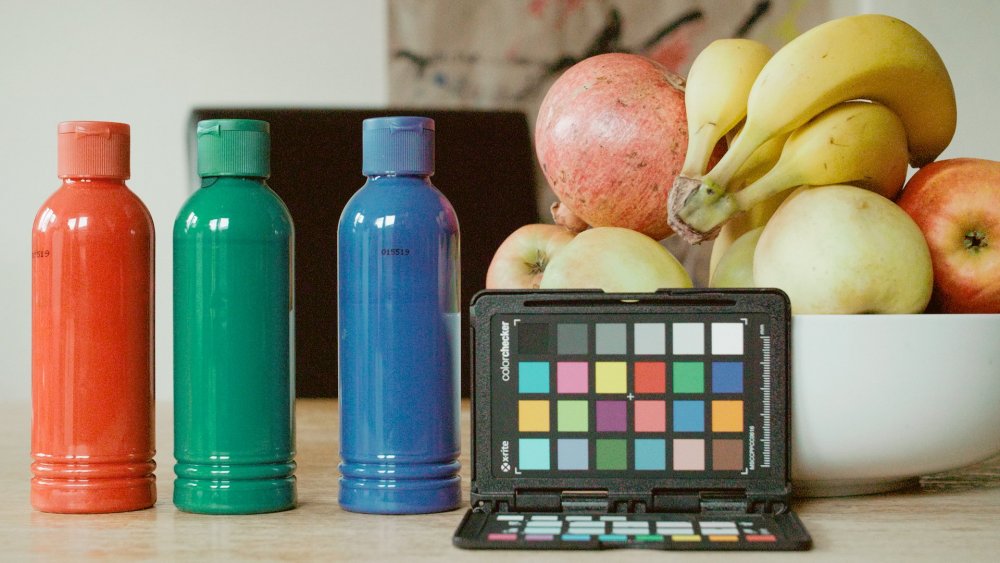-
Posts
970 -
Joined
-
Last visited
Content Type
Profiles
Forums
Articles
Everything posted by hyalinejim
-
On the topic of placement within a room, where is the best spot for getting nice sound and minimising reverb? Maybe @IronFilm will know?
-
And their expensive crap! Yes, I agree with you. They weren't always like this.
-
I'm a big fan of doing this. Sometimes clients are mildly shocked by the suggestion, as if it will suddenly be too dark to see if I turn off the lights... in daytime. Then I have to start explaining about CRI and green spikes versus full spectrum etc. Their eyes glaze over then and I guess they assume I'm not actually a mad person. But I always find it weird that they think it's a weird thing to do, when it happens from time to time.
-
Maybe lower or switch off the ambient/fill light as the white/closer walls are acting like reflectors.
-
@Kisaha Well done, good luck and post your results!
-
Lovely shots Tim! The most "digital" film I've shot, in terms of colour, is Ektachrome 100 as its colour seems to be more accurate than negative film is, similar to how any digital stills camera has fairly accurate colour in RAW when rendered with the Adobe colour engine.
-
Giving them a bit of additional exposure is good for most colour negative especially if they're a bit exhausted, like myself. You get better contrast in the shadows, and usually better colour saturation at +1 or +2, even when fresh. Exceptions that I've tested are: Ektar 100 (+1 is ok but box speed has better colour saturation). Same for Ultramax 400. And ProImage 100, I'm convinced is cut from the same sheet as Gold 200 and 100 is the perfect ISO for it.
-
Yes, I think the image quality from the lens(es) will be stunning. But nowadays if anything goes wrong electronically it looks like you are basically fucked and can kiss goodbye to whatever you paid for it. And that's bound to happen eventually. Even at the height of my film GAS I tried to avoid spending over €100 on anything for this very reason. Anyway, hers is clicking away happily. So far so good!
-

MAKE-BELIEVERS on AVANCA film festival (Portugal) this July
hyalinejim replied to Emanuel's topic in Cameras
I used to live at McCurtain's villas and there is a well-known McCurtain Street in my home city 🙂 Maith an fear, Kenjo! Submit it to IndieCork @Emanuel a very good festival, with close links to IndieLisboa 🙂 -
Sounds like you got in at the right time. I do have an XA and don't shoot it quite as much as I should, although I do try as it looks so cute, is very small and results are good if I get the focus right. I had an Olympus RC but it was knackered and I sold it on for parts. Also had a Canon AF35ML and the AF was a crapshoot so that went back into the Bay. I went on a compact film camera binge during lockdown as there was little or no other entertainment. Sold all thatI didn't love before I moved temporarily to New Zealand, which was a mild mistake as I could have made quite a bit more over there, at the ends of the Earth, than I did over here. Here, at the pool in Tuscany there is a Dutch girl taking her first shots with a green sticker Contax G1 that she paid €700 for. I am obsessed with film freshness because I'm profiling various film stocks to make emulation luts (for video) and Lightroom profiles (for photography). I was lucky to be able to buy fresh rolls of everything I'm interested in very shortly before this current shortage / supply chain problem hit. At the same time I have 40 - 50 rolls of various films that have been shipped across the world in the belly of a presumably equator-hugging ship on a five plus month journey at least once and/or zapped by X rays at numerous airports there and back again and I now have absolutely zero qualms about using these rolls for my own personal use now. I don't care how beat up the chemistry is, the value of that at today's prices is insane.
-
Yes. Give it another read. There's something fundamental you're not seeing. The x axis is the log of exposure, which depends on the amount of light (% reflectance) being recorded. The y axis is density, the degree of change in the negative due to exposure. There are lines linking both axes at various exposure levels. "98%" etc are written horizontally but that's just for legibility. They are properties of the x axis, exposure, not of the y axis, density. 98% and 2% are characteristics of the scene, for example white paper and black paper, not of the negative.
-
Yes, for sure! The 1n is reassuringly heavy and solid. It has an incredibly loud shutter sound which can be a good thing or not. And I forgot to mention it's one of the very few Canon EOS film SLRs with 100% or thereabouts viewfinder coverage.
-
The percentages refer to reflectance of light in the scene.
-

MAKE-BELIEVERS on AVANCA film festival (Portugal) this July
hyalinejim replied to Emanuel's topic in Cameras
It looks great @Emanuel! Is it a kind of Umbrellas of Cherbourg vibe but without all the melancholy and unhappiness? -
Canon EOS 1n with Sigma 70-200 2.8. In truth, the camera body doesn't matter so much for image quality on film, only the lens and film stock. Aside from practical considerations of AF ability and perhaps minimum shutter speed. Yes but the reflectance values are a measurement of the light values in the scene, not of the film. Yes, they translate to density values on film. And they translate to RGB values in digital video. But the 2% to 98% = 5.5 stops is a characteristic of light, not of cameras.
-
Ah, I see what you mean now. The reason I misunderstood you is because 2% to 90% = 5.5 stops is a measure of light reflectance. It's a property of the scene and not of the recording medium. It's true no matter what camera you're using. Ha ha! Yes, seven stops is pushing it a bit even for Portra 400. However, the image is still usable, if not optimal: Now please don't say "I should have said eight" as I've run out of images in this series 😂
-
Thanks for that, rest well and I hope you feel better soon.
-
Now, @kye I'm a big fan of your posts, steeped in research and a relentless pursuit of the truth, with a generous doses of suspicion of received wisdom and contempt for misapprehension and hearsay. But in this case you might be a little bit guilty of some of the things that you so rightly rail against! I haven't read the link as I'm drinking wine on holidays in Tuscany, but surely the point being made in that document is that the difference between 2% and 90% reflectance of linear light is 5.5 stops (it's straightforward multiplication), and not that negative film has a dynamic range of 5.5 stops (slide film might, depending on the film). No, it's not similar to film, unless you're talking about Velvia slide film, for example, which does have a very limited dynamic range because it's so contrasty. Negative film can record a lot more. Around 10 stops is probably the lowest I've seen (Ektar 100). That's the recording medium. The display medium traditionally was paper (about 7 stops) for print photography, depending on the paper, and I don't know how many stops a projector could reproduce but I'd guess that for movies the dynamic range of the negative was compressed to fit the dynamic range of the print film. Sony's point about Rec709's dynamic range being around 5.2 stops has a lot to do with the dynamic range of a traditional CRT display. And historically this was all that was needed. Black paper and white paper in flat lighting conditions, ie: TV studio lighting. If you watch old BBC shows like Fawlty Towers and Mr. Bean you'll notice that the interior scenes, where lighting could be controlled, were shot on video, and exterior scenes (where it couldn't) were shot on film. It was all compressed for shitty old TVs. But you can still spot the difference. Any Vision 3 film or still film based on Vision 3 technology should be ok at 5 stops over for skintones. The highlights will be a bit compressed for sure, but the skin itself when properly colour balanced should look fine. Here's Portra 400 at 5 stops over: Anyway, these are just small points and your thesis still stands: that there's a lot to be gained from shooting with "lesser" digital video cameras. To that I would add for you specifically Kye or anyone else reading this thread who is interested in image quality - which I define as (in order of importance) colour interpretation, stops of light reproduced and resolution - get yourself a 1990s/2000s autofocus film SLR that will accept one or more of your existing lenses and shoot some film OR any film camera. If you like pretty pictures, it leaves digital in the dust. But yes, we are shooting on digital devices that record 10+ stops and have been for quite some time now. The average scene brightness range is 7.5 stops and if you're grading for a Rec709 display, traditionally that meant quite a bit of contrast. So if your camera A does 12 stops a camera B does 10 those 2 extra stops are in the very bright highlights and the very dark shadows. However, with an insipid Netflix drama grade where everything just looks like they shot in log but forgot to apply a lut you would definitely notice a difference. I don't think film ever looked much like that (although it could, if we had wanted it to). And we'll look back on the log look in ten years' time with the same rueful sense of aesthetic horror as we view any decade's transgressions of taste, until in another decade or two they become cool again and everyone scrambles to recreate it. So don't throw out your first gen Sony S-Log thingy, just as I've kept my MiniDV Canon XM2 that I expect to be asked to make a music video on any day now.
-
Is your other ND the SLR Magic Vari ND II? Are you saying that the Nisi is sharper, or just less colour cast? My main interest in the TrueColour is if it has less of a polarisation effect than what I already own (SLR Magic). To me, that is the annoying feature of Vari NDs.
-
I too would love to be back shooting Canon, probably for sentimental reasons. But I highly doubt you'd be able to do this. Useful basic features, if present at all, like histogram and audio meters will probably also disappear as soon as you hit record 😂 Honestly, they should just change their name to "Cannot" and be done with it!
-
Yes it has a front thread and like the SLR magic it's one size bigger than the rear filter thread. Are you sure that the lens hood is not causing the vignetting?
-
I actually enjoyed this "review" as the shots in it are lovely. I might give this filter a go as it seems to be quite good according to Amateur Photographer who I suppose are probably a bit more reliable than the average YouTuber. The filter is Nisi True Colour. Note, that it's a 1 to 5 stop, not the 1.5 to 5 stop which they also sell. A poster on our friend @FoxAdriano's thread on a different forum had this interesting tidbit: I guess the True Colour and similar filters that have a low base density use the weaker polarisers, which is probably better to reduce colour cast, degree of polarisation and x pattern. I'm very much leaning towards a 5 stop fixed ND plus light vari ND for DR Boost on GH6 outdoors.
-
It's a very difficult question to answer. The vignetting problem depends on the lens on you use. The wider it is, the more vignetting is likely. In general, thinner filters are less likely to vignette than thicker ones. You could also try buying a filter one size up from your largest lens and use a step up ring. My SLR Magic Vari ND II is actually in itself one size larger, ie: its rear filter thread is 82 and its front 86 or something. Colour cast is not a problem for me because it's a global change in colour so a white balance adjustment will correct for it. However, a colour cast that increases or decreases with varying levels of ND might be a nuisance, I suppose. I agree that it's very hard to find objective information. Most of it is on YouTube, not definitive and probably compromised by relationships with the manufacturers. The best thing would be to order four or five of the most likely contenders, test them yourself, keep the one you like best and return the others... if that's possible with the retailer(s) you buy from. PS: and if you do, post the results!
-

How to make RAW-like corrections to 10bit log in silly old Premiere
hyalinejim replied to hyalinejim's topic in Cameras
I would love to be in Resolve 100% of the time but I'm too tied in to Premiere to switch, at least for work stuff. Sometimes I get asked to incorporate bits from an old video by a client. So I have projects within projects within projects sometimes. The other great thing is bringing print material from designers from Illustrator and InDesign into After Effects and eventually into a video. -

How to make RAW-like corrections to 10bit log in silly old Premiere
hyalinejim replied to hyalinejim's topic in Cameras
Yes, it works! At least for the workflow I'm describing. All of the below are GH5 V-Log with a lut applied (open in separate tabs to compare): Target image, roughly correct exposure and WB. Wrong image, 3 stops underexposed and wrong white balance. Wrong image corrected with exposure and white balance adjustments within Lumetri, under the lut, so that patch D4 matches the target image. Note that contrast has changed and there are colour is off in the shadows and highlights. Wrong image corrected as described above. Contrast is correct and colour is almost perfect (I think some colour information is clipped in the underexposure and cannot be recovered from the noise floor).




